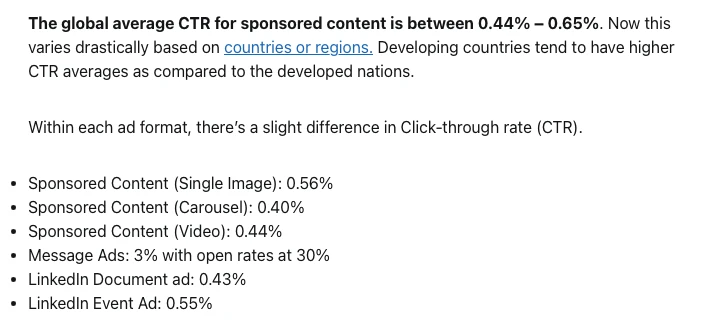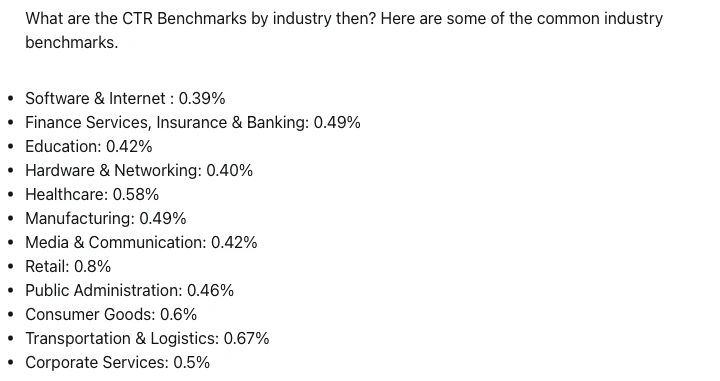Introduction:
Welcome to Part 3 of Is Your Marketing Agency Cutting Corners? If you haven’t already, we recommend reading Parts One and Two of this three-part series on our main blog page [here]. Grab your favorite beverage and strap in—we’re diving deep into how some marketing agencies manipulate performance metrics and deceive clients through uncontextualized, opaque reporting tactics.
Pooling KPIs & Ignoring Contextualized Results
There are many ways performance reporting can be manipulated. We’ll go deeper on this in the Lack of Transparency section below, but for now, let’s focus on LinkedIn’s paid advertising platform and one of its most common KPIs: Click-Through Rates (CTRs) – which measure the number of clicks versus impressions. A higher CTR suggests stronger ad engagement.
Before examining how some agencies bend the numbers, it’s important to understand the two biggest factors influencing LinkedIn CTRs: ad format and industry type. Like most ad platforms, LinkedIn supports multiple ad types—each with a unique benchmark CTR that varies by industry. For instance, the average CTR for Single Image ads is around 0.56%, which is moderately higher than Carousel and Video ads, and significantly lower than Message Ads.
Take a look at how widely CTR averages vary by industry. It’s crucial to contextualize your results against relevant benchmarks when evaluating your own performance.
Now for the mic drop: misrepresentation. We’ve seen agencies combine CTR statistics from different ad types to skew results. The example below showcases an average CTR of 0.52% (What the agency was reporting to the client) , but the top campaign alone reported a whopping 1.73% CTR.
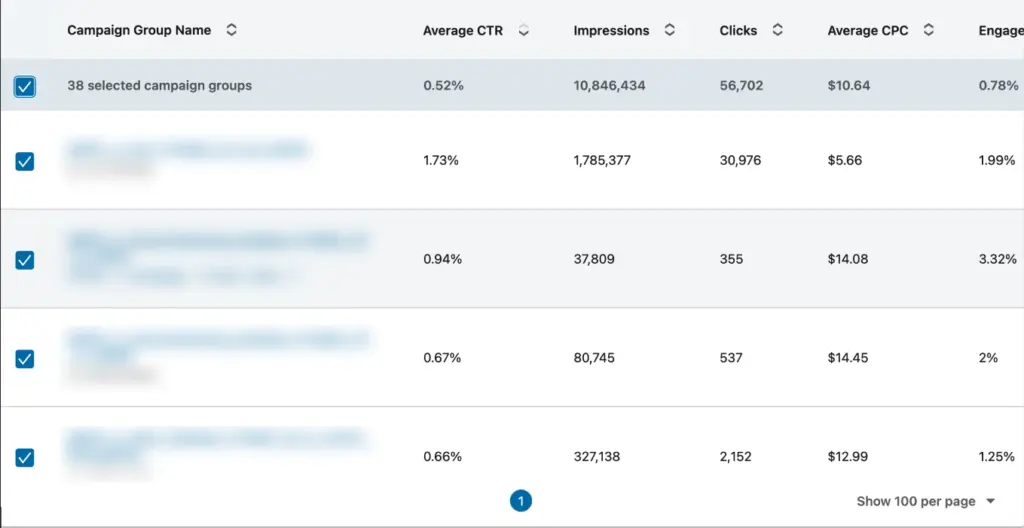
Upon closer inspection (Example 2 LCM), the inflated CTR was driven by two Conversation Ads with open rates of 67% and 56% – which LinkedIn records as CTRs, even though they’re not actual click-through engagements.
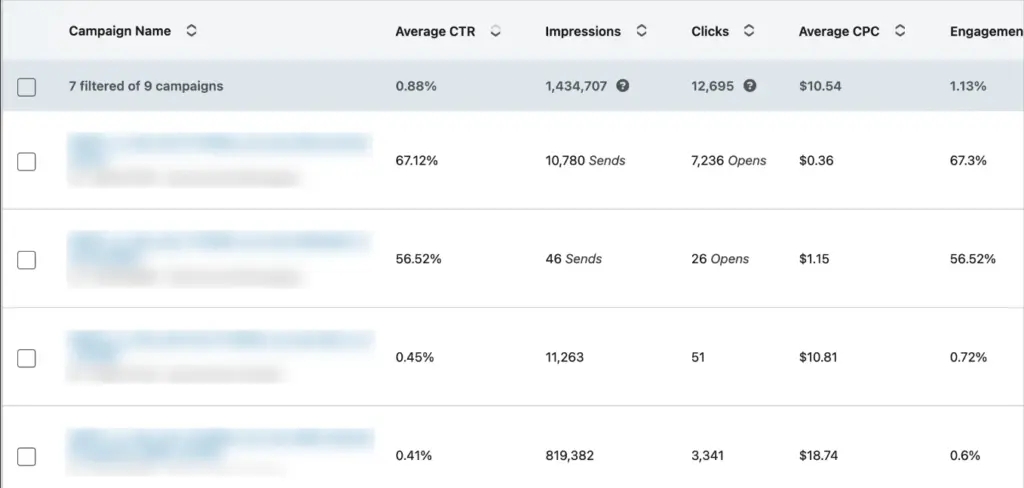
By mixing these ad types in a single campaign, agencies can inflate the average CTR and make it look like the campaign is outpacing industry benchmarks – when in reality, it’s not. This kind of misleading tactic is more common than you might think.
Once the outlier data is stripped away (Example 3 LCM), the actual CTR performance reveals far less impressive result of .28% – often below LinkedIn’s standard CTR benchmarks.
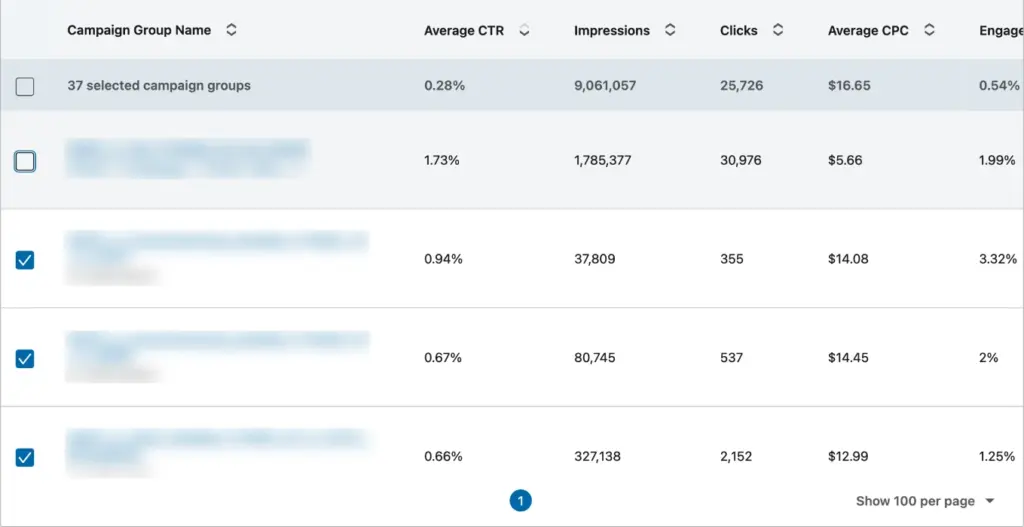
Lack of Transparency: The Unethical Ways Some Agencies Boost Performance Results
As mentioned earlier, there are countless ways agencies can make their performance look stellar – without showing the full picture. Below are some of the most common tricks we’ve seen:
Algorithms, Attribution Models & Data Accuracy
Always ask your agency to explain how performance is being calculated. Understanding what attribution models, tracking pixels, and algorithms are being used—and why—will help protect you from being misled. In particular, data accuracy around attribution, goal conversions, and key performance metrics is critical to ascertaining marketing ROI.
Modern privacy tools, ad blockers, and tracking restrictions often lead to incomplete datasets. When agencies calculate return on ad spend (ROAS) using these fragmented data points, it introduces major margin-of-error gaps – which are unacceptable when you’re investing large amounts of capital into your marketing.
If you don’t know how accurate your data is, you could be throwing your budget into a black hole. There’s no excuse for “guesstimate” reporting in today’s data-driven landscape.
Conversion Tracking
Here’s a real-world example of how conversion tracking can be manipulated.
Let’s say an agency sets up a LinkedIn paid campaign and agrees to track “leads”—defined as users who fill out a form on any of the campaign’s landing pages. The agency chooses last-touch attribution, sets up a manual conversion trigger using “page load,” and matches any URL containing the word “thank-you.” as seen in (Example 4 LCM) below.
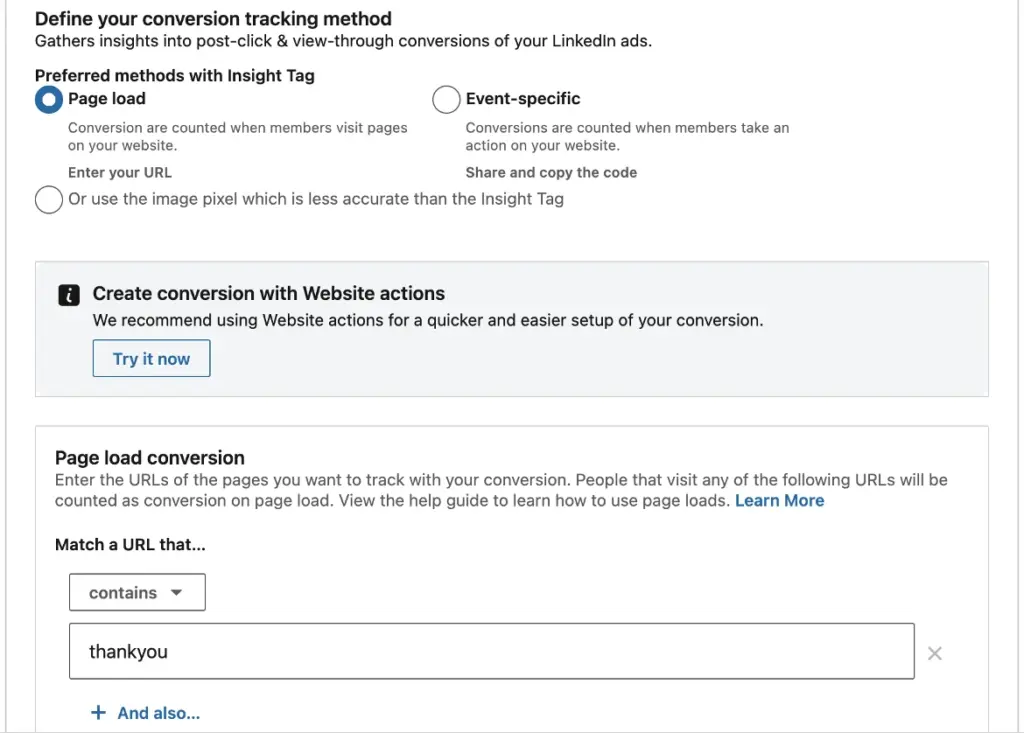
Targeting Parameters
Understanding your buyer journey is key to campaign success – and so is defining precise target audiences. Yet, some agencies cut corners with audience segmentation to save time and inflate paid campaign KPIs.
We’ve seen marketing budgets wasted due to lazy or dishonest targeting strategies. Yes, LinkedIn offers robust filters – but they take time, research, and testing to implement properly. Some agencies simply skip that work.
Here are a few ways to hold your agency accountable:
- Audit Audiences – Use your ad platforms (Google Ads, Facebook, LinkedIn, etc.) to verify that audience settings match your agency’s descriptions (e.g. remarketing, cold prospecting, named accounts). We’ve seen agencies claim to run multiple campaigns when it’s just the same audience with slightly tweaked copy.
- Targeting Value & Context – Study targeting methods. A person’s skills vs. their job title can drastically change campaign ROI results. Tools like HubSpot can help you sharpen your targeting knowledge.
- Track Budgets by Funnel Stage – Break out your budget by buyer journey stages (awareness, consideration, decision) to measure ROI at every step and keep track of where budget is being allocated.
- “Is it Relevant?” Check – Do your ads and landing pages match the audience’s needs? Lazy agencies often repurpose ads for unrelated industries with minor tweaks (e.g., tacking on “Financial” to a generic campaign for a financial audience—without actually customizing the content or landing page).
Part 3 Conclusion:
The key takeaway here is: Trust but verify.
Have someone – internal or external -regularly audit your agency’s work. Without this, it’s difficult to uncover the subtle (or not-so-subtle) ways agencies cut corners. And here’s the truth: if you catch one shortcut, chances are there are more.
If your team has concerns about performance reporting, campaign ROI, or you simply want a second opinion, our crew at Endeavor is here to help. We offer comprehensive 360° marketing audits that identify performance gaps and optimize your ROI at every stage.
Thanks for joining us for this three-part series! We hope you’ve gained a few new insights – and a fresh perspective on how to get more out of your marketing investment.


